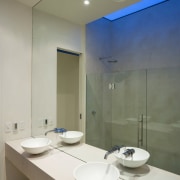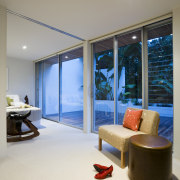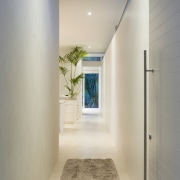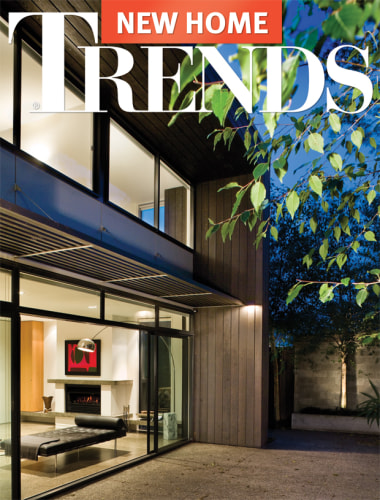Please do not disturb
The central principle behind the design of this infill house was to provide a high level of privacy from the surrounding homes, while minimising the impact on the bush-clad site

A number of reasons lie behind the end of the traditional suburban dream of a quarter-acre section, but the fact remains we're having to live on smaller and smaller plots of land.
One of the biggest challenges this presents to architectural designers is how to build a comfortable family home on a tight, and in many cases, undulating site.
"When you're dealing with a site that has a number of constraints, not least of which is access, the best solution is usually to let the site dictate the design, instead of trying to impose a set design onto the site," says Brent Barrett of Unik Limited, the designer and builder of this property.
Barrett says within thirty minutes of viewing the site he envisioned the design of the house, one in keeping with the topography.

"Although we're close to the sea, I didn't want to build up to capture the view. It was important to me to build a home that nestled into the site, retaining a high level of privacy.
"I wanted the house to take full advantage of the bush that covers the site. Good indoor-outdoor flow was another priority, as was bringing the garden indoors through large plantings. Indoor garden atmosphere is one of the most underrated aspects of architectural design in New Zealand," he says.
With an idea for contemporary open-plan living within a sleek, refined space, Barrett chose to build in solid masonry, while a steel roof gave him the required strength to achieve a single ceiling plane.
"The premise for the design of this house was to allow the natural environment to be fully integrated into the indoor spaces. A high stud and pitched roofline with expanses of glass provide a minimal barrier to the sky, allowing both vertical and horizontal views to the outdoors.

Barrett says a great deal of thought was given to ensuring the functionality of the home especially as it is only 260m². That meant combining modern design with a family feel, to ensure all of the areas are usable, and that there is no wasted space.
The spaces can also be easily reconfigured to suit the changing needs of the family unit. The downstairs area can be used as a self-contained master suite, a children's bedroom and play area, or even a teenager's retreat complete with its own separate entrance.
The minimal use of colour and adornment also serves to highlight the pared-back interior architectural style that Barrett chose for the house. All of the lighting, for example with the exception of the kitchen pendants is recessed, in keeping with the desire for an unbroken ceiling plane.
"All of the built-in cabinetry has been designed to conceal electrical wiring, while light switches and power outlets have been kept to a strict grid pattern to minimise their visual impact," says Barrett. "Everything is designed to magnify the sense of open space."
Credit list
Kitchen manufacturer
Living room furniture
Bedroom furniture
Blinds
Lighting
Paints
Cabinetry
Shower fittings
Toilet
Taps
Floral settings
Furniture stylist
Dining furniture
Outdoor furniture
Flooring
Heating
Televisions
Benchtops
Vanity
Lighting
Tiles
Story by: Justin Foote
Photography by: Jamie Cobeldick Please do not disturb The central principle behind the design of this infill house was to provide
Home kitchen bathroom commercial design
Connected to the ocean
Contrast and connection
Masculine meets mixed use













